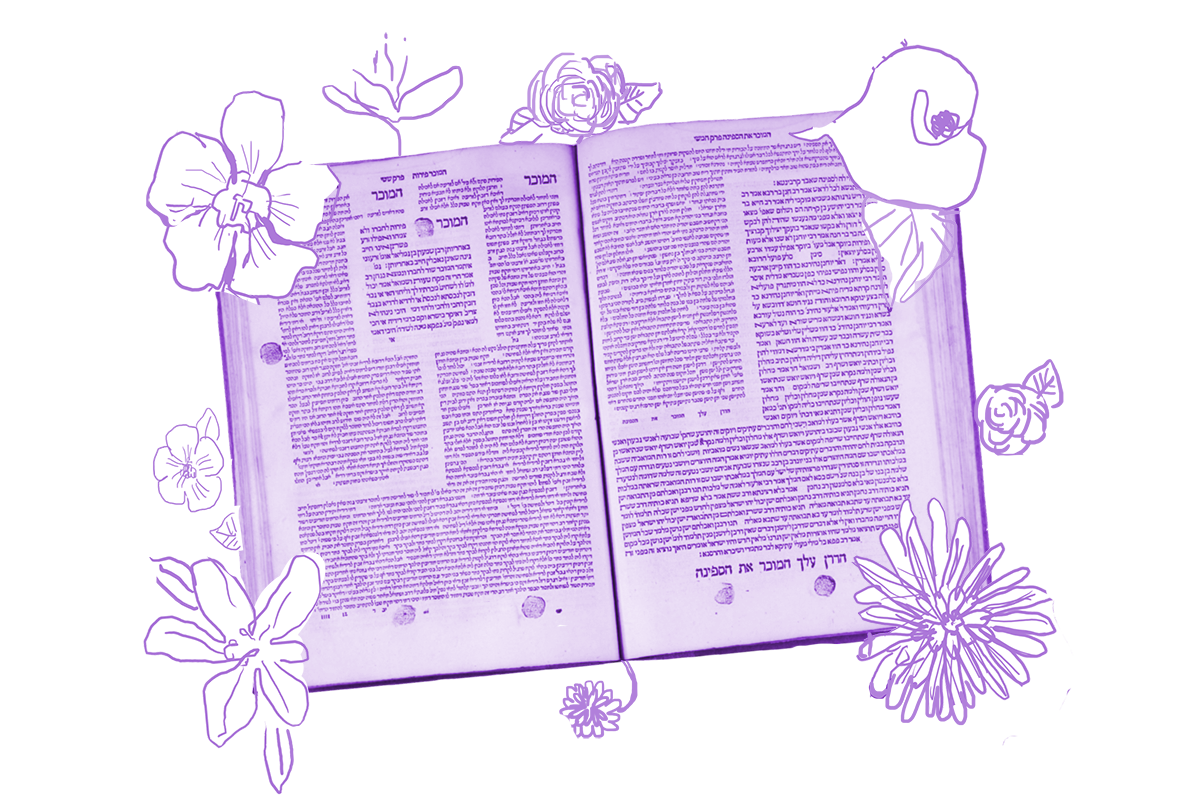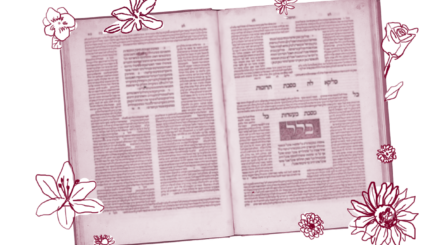If you only know about angels from Renaissance art, you probably picture them as either relatively androgynous winged adults or as fat babies. But biblical angels are a lot less humanoid and a lot more weird. Ezekiel 10:12 describes cherubim, for example, as having “their entire bodies — backs, hands, and wings … covered all over with eyes.” Why are they covered in eyes? The Bible doesn’t say, but perhaps we are meant to understand that they have a 360-degree view of the universe — nothing escapes their perception.
In our journey through the daf, we’ve seen the rabbis adopt biblical imagery, adapt it in a variety of ways, and ignore it when it doesn’t fit their theology and worldview. You might think, then, that biblically accurate angels wouldn’t have a place in the Talmud. But on today’s daf, we meet a very important angel who, consistent with Ezekiel’s vision, is covered in eyes.
They said about the Angel of Death that he is entirely full of eyes. When a sick person is about to die, he stands above his head, with his sword drawn in his hand, and a drop of poison hanging on the edge of it. Once the sick person sees him, he trembles and opens his mouth; and the Angel of Death throws the drop of poison into his mouth. From this he dies, from it he putrefies, from it his face becomes green.
The Talmud describes the Angel of Death personally bringing death to every human at the appointed time, by dripping poison from his sword into their mouth. Unlike human-made poisons, this serum causes not only death but also decay. The Talmud describes the Angel of Death as “covered in eyes,” but doesn’t address any potential deeper meaning behind it. Instead, the Talmud is more interested in interrogating the Angel of Death’s method. The tradition just quoted states that this angel kills by dripping poison from a sword.
Shall we say this disagrees with that taught by Shmuel’s father? As Shmuel’s father says: The Angel of Death said to me: Were I not concerned for human dignity, I would uncover the place of the slaughter, as with an animal.
Shmuel’s father agrees that the Angel of Death uses his sword to kill, but suggests he would prefer to use it the way a sword is normally wielded — to sever the person’s body. And he has a very trustworthy informant: the Angel of Death himself! The language used is particularly interesting — the Angel of Death says that he slaughters the person, using the same verb, shakhat, that is used for kosher slaughter of animals. So how does the Angel of Death end human lives? The Talmud resolves this contradiction with a creative solution:
Perhaps that drop of poison cuts the two organs that must be severed in ritual slaughter.
The drop of poison on the Angel of Death’s sword functions to sever the two organs that must be cut in a kosher slaughter: the trachea and the esophagus. Thus the human is killed by poison but in a manner that parallels animal slaughter.
We still don’t know why the Angel of Death is covered with eyes, but the description reminds us that — contra Renaissance depictions and the famous turn of phrase from the New Testament, Hebrews 2:7 that “you have made him a little lower than the angels” — humans are very different from angels. At the same time, the rabbis’ suggestion that humans ultimately die in the same way that (kosher) animals are slaughtered suggests that humans and other mammals are not as different as we might think. Humbling food for thought.
Read all of Avodah Zarah 20 on Sefaria.
This piece originally appeared in a My Jewish Learning Daf Yomi email newsletter sent on July 8, 2025. If you are interested in receiving the newsletter, sign up here.
With your help, My Jewish Learning can provide endless opportunities for learning, connection and discovery.



